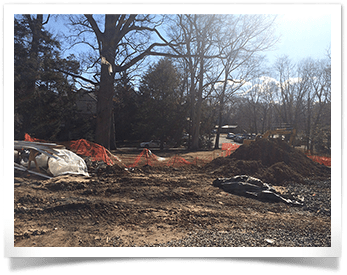Tree Inspections, Tree Evaluations, & Tree Consulting
- Home
- Tree Inspections, Tree Evaluations, & Tree Consulting
Tree Inspections, Tree Evaluations, & Tree Consulting
Trees are faced with a myriad of problems and potential for damage all day every day in our urban and suburban forests. Bugs (insects), blight, disease, drought and over hydration, storm damage, chemical interference ( pollution, incorrect fertilization), improper pruning and construction damage.
Friendly Tree Experts staff of arborists and tree experts provides thorough tree inspections for health and safety concerns, property and building site evaluations and consults as to the most appropriate plan of action to prevent, limit or deal with a defect or issue. Knowing the issues at hand in a timely manner can save you money and save your tree or shrubs. Regular inspections are a major component in effective tree maintenance programs. Curing a problem once it develops is much more difficult, time consuming and more costly than preventing one. Our Are Your Trees Friendly initiative offers FREE tree health and safety inspections as well as education as to defects and hazards in trees.
Types of Tree Damage and The Value of Establishing Tree Protection Zones for Construction Sites (TPZs)
Physical injury to the main stem or branches of a tree will occur if construction equipment is permitted close to the trees or if structures are built into the growing space of a tree. Physical injuries are permanent and can be fatal. Root cutting is another type of injury that can significantly impact the health of a tree. Excavation for foundations or utility installation may cut tree roots if the excavation is too close to the trees. The majority of tree roots are found in the upper 1ft of soil. Trees can also become destabilized and may fail if structural support roots are severed. Stock piling soil, sand, gravel at the base of the tree within the root zone or drip line of the tree can compact the soil so much that the roots can be crushed and or limit their vascular abilities.

Also heavy equipment and trucks parked under a tree and the exhaust blowing on the tree and its sensitive leaves can do severe damage. Signage should be placed on fencing around the sensitive root zone to limit these types of damage. Prior to commencing with any excavation, a test hole should be dug out by hand or an air spade- this piece of equipment uses supersonic air to “blow” soil and material from around the root zone to show the size, condition and location of the roots in the soils strata. This will give us the opportunity to set up a TPZ or Tree Protection Zone in an area of minimal disturbance to the tree and its sensitive root structure.
We encourage folks to make their contractors and their subcontractors aware that the TPZ is a serious issue and have found that if you work into your contracts the maintenance of these Tree Protection Zones the trees are damaged less and have a greater chance to flourish after the work is done.
Tree Protection Zones allow us to limit the conditions that cause damage to the roots which include:

- Compacting the soil around roots
- Grading soil over roots
- Grading soil away from roots
- Severing roots
- Changes in drainage patterns
The vast majority of tree’s roots are within one foot of the soil surface and extend outward from the trunk much farther than the longest branches (dripline). Saving trees during construction means protecting the root system from damaging activities and a Tree Protection Zone is an affordable way to maintain the integrity, health and safety of your trees (which are assets) and limit overall impact on the property.



